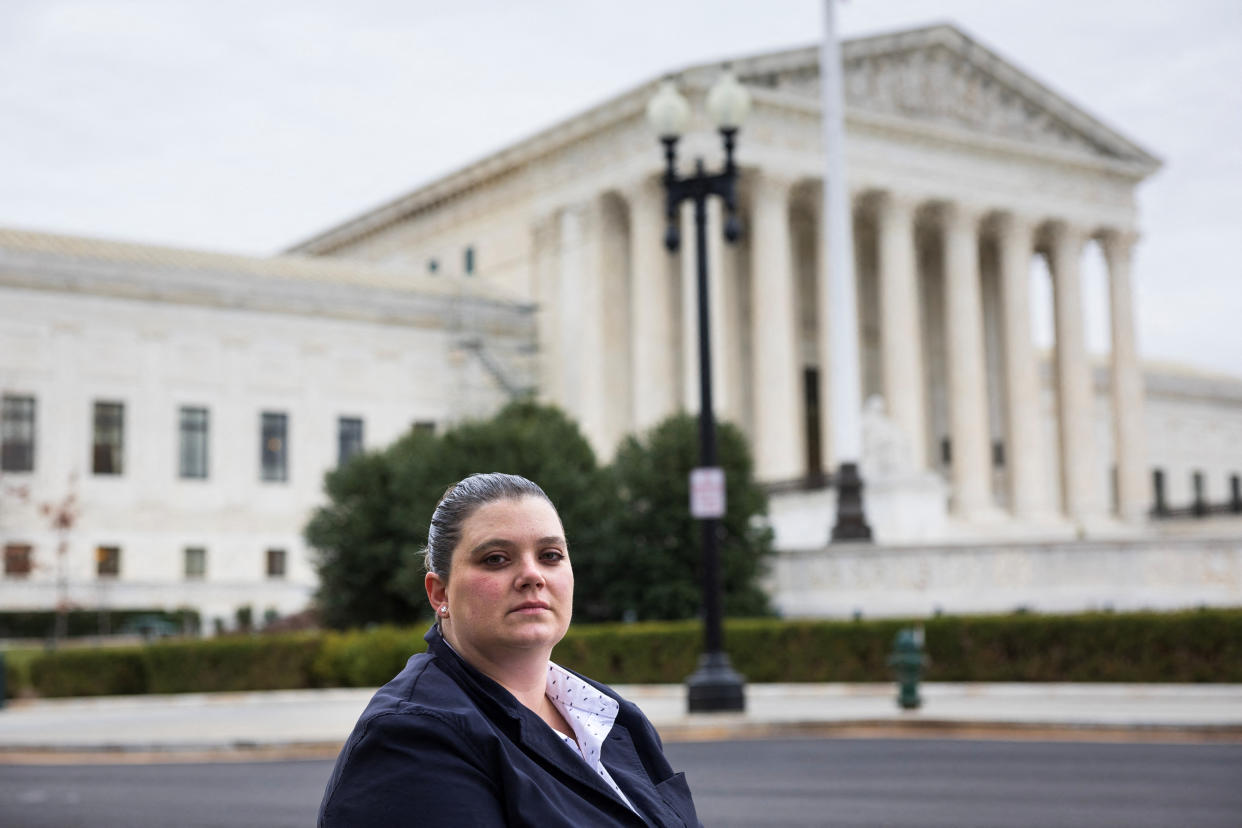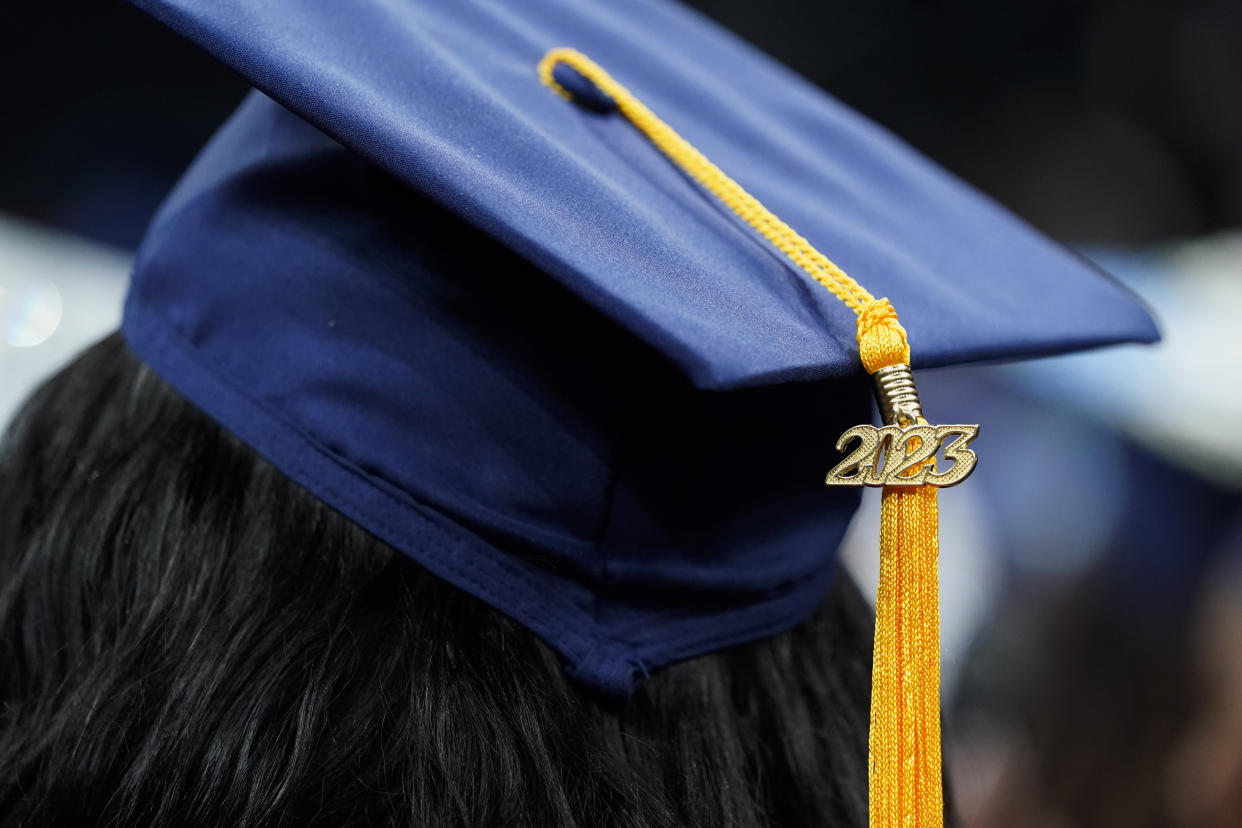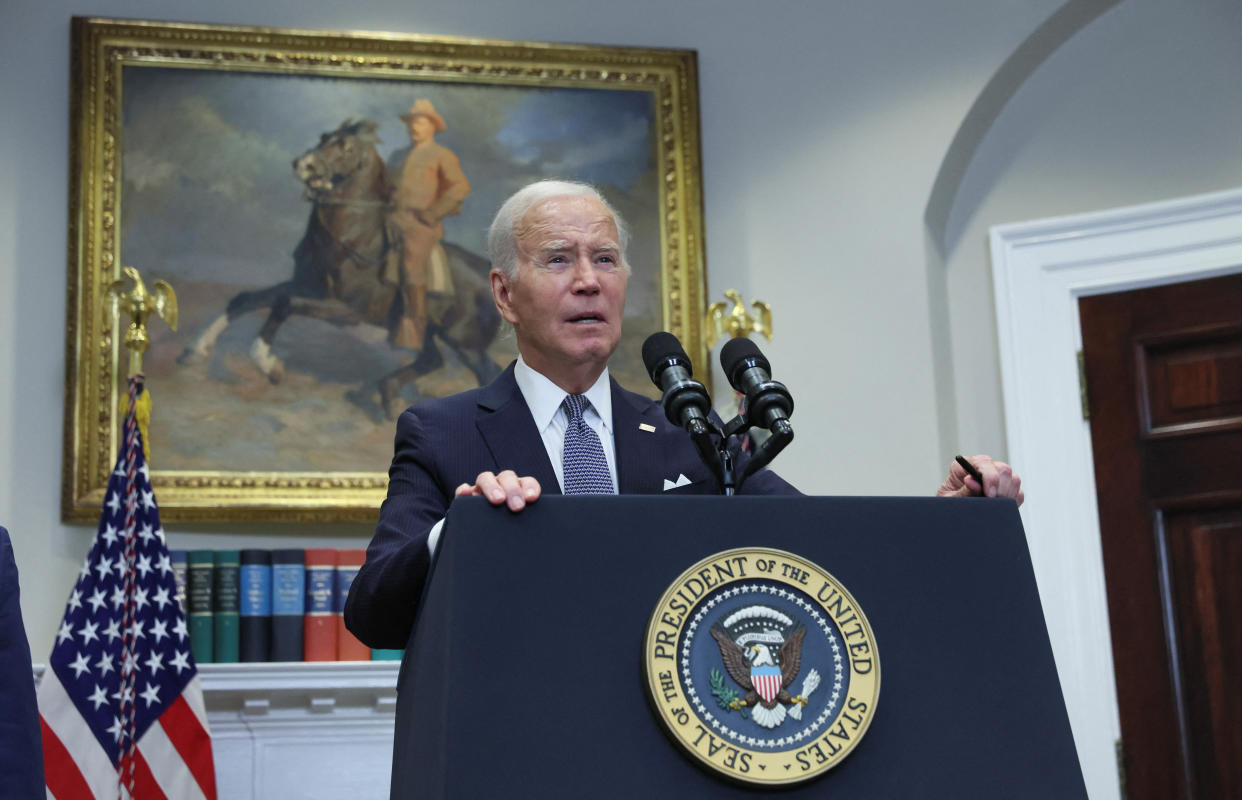Student loan borrowers brace for 'the wave' as payments restart
During the pandemic, Shanna Hayes and her partner achieved some key financial strides despite both of them getting laid off at different times in the past three years. They paid off both of their cars, reduced their credit card debt, and managed a move from New Hampshire to pricier Washington, D.C.
It was all possible because Hayes didn’t have to pay her federal student loans since the Covid-19 loan payment pause was enacted in March 2020. Now with that pause expiring and payments resuming in October, Hayes — like many other borrowers — are wondering again how they will be able to keep up.
Read more: Worried about when student loan repayments resume? These programs could help
The Biden administration has laid out several ways to cushion the blow for borrowers as repayments begin, but those efforts may fall short for some.
"The payment pause was a life vest and repayment is the wave that pulls you back out," Hayes, a first-generation college graduate and former high school teacher who was laid off earlier this year, told Yahoo Finance. "The human aspect is real people behind the numbers."

A brief, but needed, reprieve
During the pandemic, the majority of the 40 million borrowers who could skip paying their federal student loans without incurring interest took advantage of the reprieve and socked away major money.
"During the 42-month pause, borrowers saved an average of about $5,000 in interest and about $15,000 in total payments on their federal student loans," Mark Kantrowitz, author and student loans expert, wrote in an article.
Some borrowers, like Hayes, were able to pay down other debt and weather setbacks. Other borrowers made other progress.
Overall, 79% of borrowers used the money that would've gone toward student loan payments to meet other financial goals, such as paying down other debts (40%), growing their savings (37%), increasing their investments (28%), or saving up to buy a home (24%), according to recent survey of 1,202 borrowers with federal student loans from US News & World Report.
"Prior to the pandemic, I made good faith payments on my student loans, but it was like throwing money into a bottomless pit due to the interest accumulation," Roman Stadtler, a cancer survivor and borrower who started repaying his student loans in 1997, told Yahoo Finance. "When the pause happened, I was actually able to get ahead, pay for my car insurance and dental insurance."

Student loans: Angst for restarting
The months ahead, though, look tougher for many borrowers as payments restart.
A recent TransUnion study found that about half of borrowers will have to pay more than $200 a month when payments restart and about one in five will see payments of more than $500.
"Research suggests those who benefited from loan forbearance increased their auto and credit card debt during this period…and many borrowers will now face increased consumer debt on top of their student loans," Jim Mahaney, a certified financial planner at Mavericus Retirement, wrote in a blog post.
In fact, more than half (53%) of borrowers got a new credit card, over a third (36%) took on an auto loan, and 15% now have a mortgage or personal loan, TransUnion found.
As a result, one out of five borrowers indicated that they could struggle when scheduled payments resume as other debt obligations have increased by 24%, according to a Consumer Financial Protection Bureau report.
"With inflation, the cost of living has also increased. We may see parents working far longer than they initially planned, while younger adults with student loan debt could reduce their contributions to retirement savings and the 529 plans of their own children," Mahaney wrote.
Overall, the vast majority of borrowers (85%) think they'll face financial hardship due to student loan repayment. About half (49%) say they'll have a hard time paying other bills, 43% will have to postpone other financial goals, and 36% won't be able to contribute toward their savings, the US News and World Report found.
The sacrifices that Stadtler will have to make are even more dire.
"My oncologist wants me to get genetic testing that could help with my ongoing cancer care, but it costs $1,000 not covered by insurance. With repayments starting, I can’t afford it," said Stadtler, whose cancer returned in 2008 after first being diagnosed in 2006.
The outlook is similarly bleak for 57-year-old Lynne, a single mother in Massachusetts who requested her last name to be withheld because her family and friends don’t know about her financial situation. Even with the payment pause, Lynne had a hard time.
"I don’t see my life getting any better with student loans because I am still struggling to make ends meet," Lynne said. "I have managed to keep a roof over my head, but there is nothing left for repairs and needed maintenance on my home. It is depressing every day to look at everything and not be able to fix it."
Even with the pause, student loan borrowers experienced food insecurity at a rate 61% higher than the national average between 2020 and 2022, while the share of borrowers struggling to pay for healthcare and medicine increased by 34%, according to an analysis of six surveys by the Student Debt Crisis Center.
The percentage of borrowers who could not afford rent increased by 17% during the period, and these borrowers were eight times more likely to experience housing insecurity than the national average in 2022.
Their plight will likely get worse in October.
"I make $68,000 as an accountant and when the pause ends, my monthly repayment will be around $700," Lynne, who also has been fighting stage 4 breast cancer since 2009, said. "My student loan debt is my biggest stressor and stress is horrible for cancer recovery and I don't know if I can make payments when payments resume. I’ll be in my 70s before I can think about retiring, and with loan payments that doesn’t leave me much to live off of."

Cushioning the blow?
With an extension of the payment pause off the table due to the debt ceiling agreement reached in June, borrowers have no choice but to plan for repayment. Still, the Biden administration provided a few avenues for relief after the Supreme Court overturned the president’s up to $20,000 in student loan forgiveness this summer.
The Education Department is offering a temporary on-ramp repayment program that doesn't penalize borrowers for late, missed, or partial payments for 12 months. Borrowers don't have to take any action to qualify for the program.
Second, the administration finalized a new income-driven repayment plan that replaces an older one. The Saving on a Valuable Education, or SAVE, plan lowers monthly payments, provides faster forgiveness for some, and prevents balances from growing due to unpaid interest.
But some borrowers are left out.
“The [SAVE] program prevents people with graduate degree debt from receiving the most generous relief,” Cody Hounanian, executive director of the Student Debt Crisis Center, told Yahoo Finance.
Stadtler expects that he may miss a few payments or send them in late because of his other bills for car repairs and insurance, so he appreciates the grace period the on-ramp provides. As far as switching income-driven repayment plans, he’s been in so many different plans, he doesn’t know if he’ll switch.
Hayes, one of the 44% of borrowers who received a new loan servicer, applied for an income-driven plan in 2021 when repayments were to start, but she never got assigned a servicer. She wants to take advantage of the new SAVE plan because she is still paying private student loans, which amount to $500 a month.
She also didn’t qualify for debt relief for her private loans under a lawsuit brought by state attorneys general against her old servicer, Navient, because she wasn’t delinquent for more than seven months.
Read more: Student Loan 101: Are federal or private loans better?
As for Lynne, she is adamant about not missing payments or using the on-ramp option after defaulting years ago on her loans during her cancer treatment. At that time, she was in an income-driven repayment plan, and after defaulting, she was switched to a standard plan with higher payments. The interest that accrued when she missed payments was added to her balance.
"The capitalized interest is the issue, not so much the amount you borrowed," Lynne said.
And although SAVE would reduce her monthly payments, switching would again trigger interest capitalization because she is currently enrolled in a specific repayment plan that requires capitalization when a borrower leaves the plan.
"Most borrowers aren’t asking for a handout, we’re asking for help because the way these loans are structured with interest capitalized at every turn, you’ll never pay it off," Lynne said.
"If I could just pay my principal balance, I’d be more than happy to pay it."
Ronda is a personal finance senior reporter for Yahoo Finance and attorney with experience in law, insurance, education, and government. Follow her on Twitter @writesronda.
Read the latest financial and business news from Yahoo Finance
